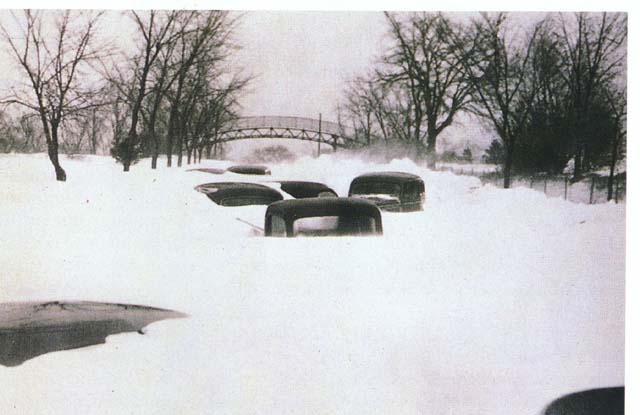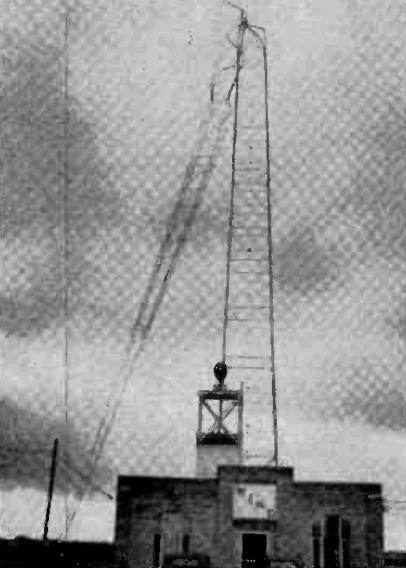
Armistice Day Blizzard, Excelsior Blvd., West of Minneapolis. Minn. Historical Society photo, NOAA.
Today marks the 75th anniversary of the Armistice Day Blizzard, a deadly storm that hit Minnesota and surrounding states on the eleventh day of the eleventh month of 1940. The strom came up suddenly and without warning, and resulted in 145 deaths, including 49 in Minnnesota. The death toll was so high because the day started out unseasonably warm, but quickly and unexpectely turned into a severe blizzard to which many were totally unprepared.
I wrote about it previously, and focused on how amateur radio operators became involved. A couple of names that later became familiar were involved. Stan Burghardt, W9BJV, later W0IT, kept Watertown, South Dakota, in touch with the outside world, and Sherm Booen, W9HRT, who later became known for the World of Aviation program on WCCO-TV, was a key link from Albert Lea.
Broadcast radio also played an important role that day. Booen was also employed by KATE radio in Albert Lea. Even though personal messages were not normally allowed on broadcast stations, an emergency exception was made and some personal messages were broadcast. Also, to establish contact with Mankato, the station broadcast a message and requested that KYSM in Mankato reply on its frequency. A two-way link was established on the broadcast band, and some emergency messages were broadcast. Local phone service was working in Albert Lea, and long-distance service was available in Mankato. Therefore, the on-air link established a lifeline to the outside world.
In Willmar, Minnesota, station KWLM had gone on the air only a month earlier. The station’s application had initially been rejected by the FCC on the grounds that Willmar was too small a community to warrant a station. The blizzard proved this argument wrong, since the station provided an important link for that community as well.
The storm covered much of the Midwest, and in Chicago, it was notable as a severe wind storm. The area was hit with 65 MPH winds, the strongest since 1898. Among the victims was this 357 foot tower of a station then located in Gary, Indiana. The call letters of the station, and the cause of the tower collapse, are revealed on the transmitter building: WIND.
And now, as another Chicago broadcaster would say, you know the rest of the story.
This image is from the November 15, 1940 issue of Broadcasting.
Read More at Amazon
Click Here For Today’s Ripley’s Believe It Or Not Cartoon
![]()
